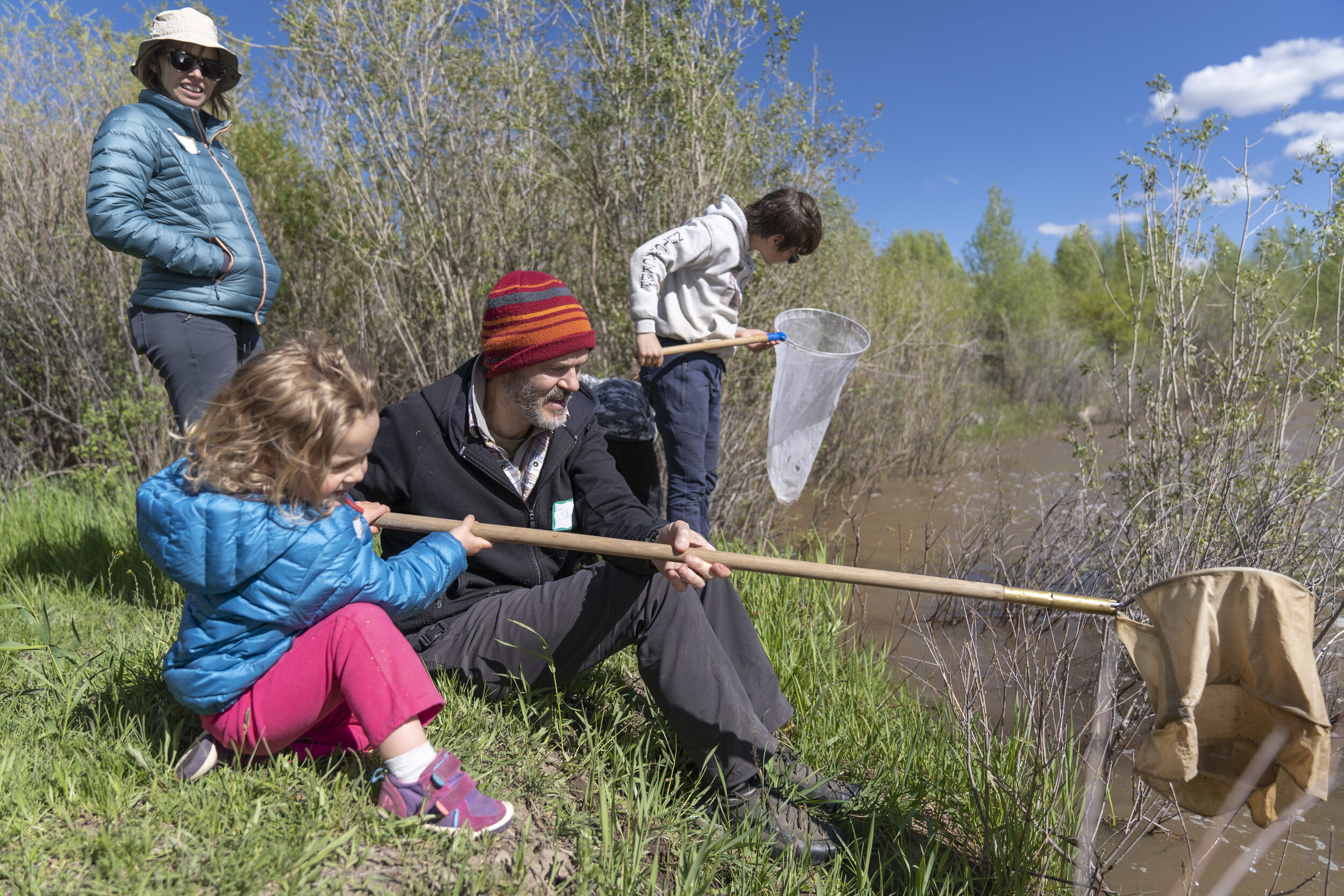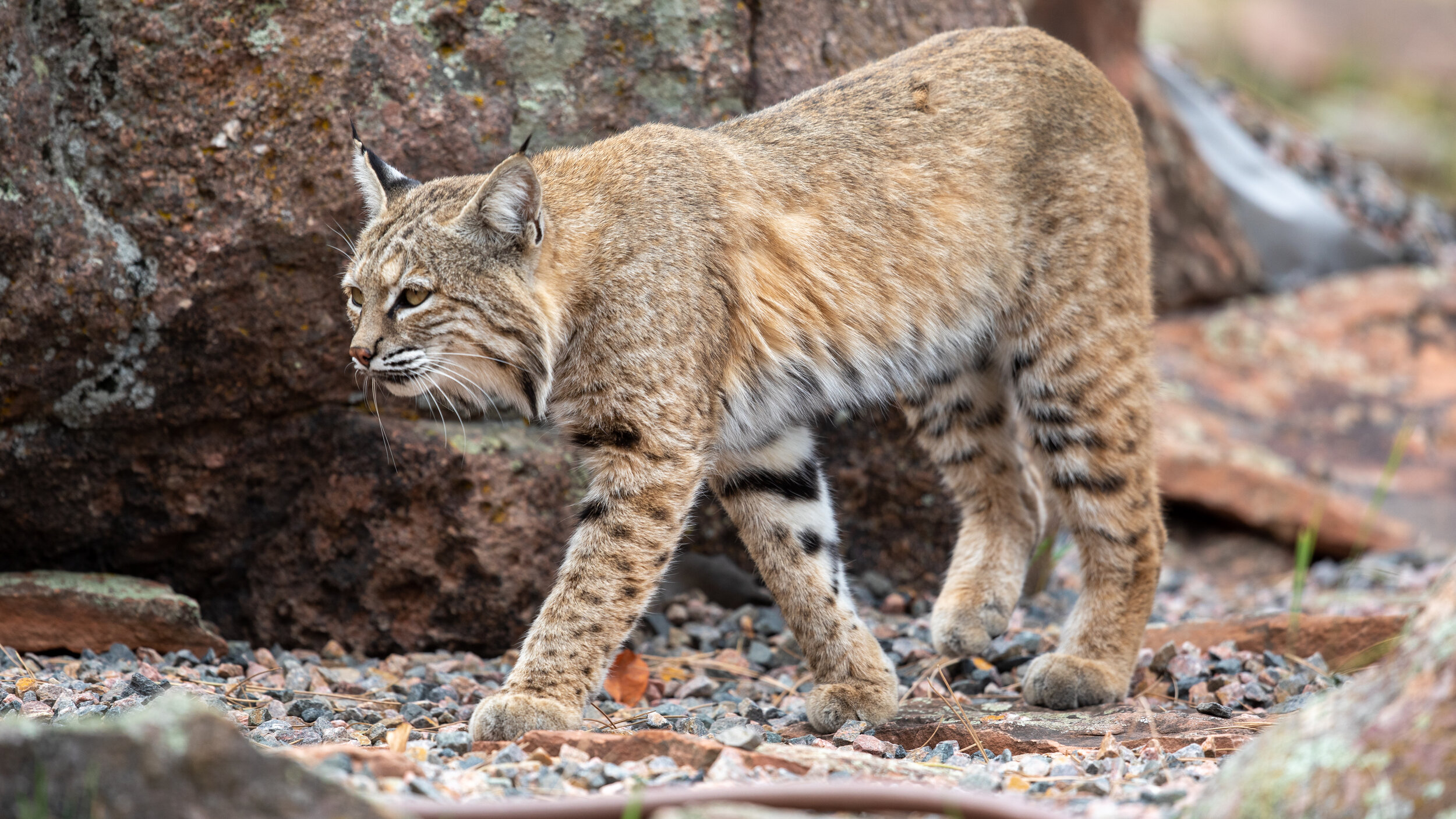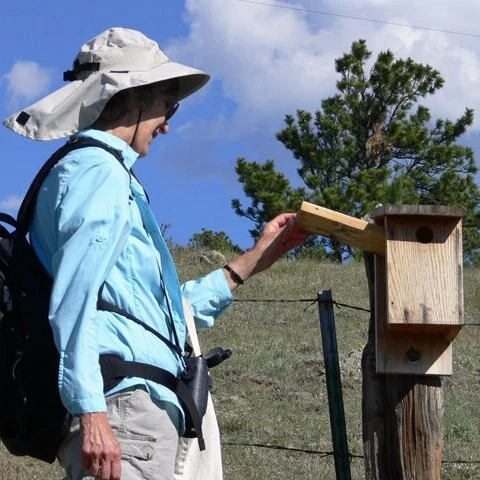
Bird & Wildlife Monitoring
Knowing the status and distribution of the wildlife in Boulder County is important for land management and conservation. BCAS volunteers contribute to long-term monitoring projects throughout the county.
Imagine a wild place in Boulder County that you visit several times a year, learning the local flora and fauna; following the annual cycles; quietly observe. Now imagine this peaceful place being permanently monitored and protected through your efforts.
Ecosystem Stewardship Initiative
In this wild place that you visit several times a year, you learn the names of the beetles and butterflies; follow the blooming cycles of wildflowers and the breeding cycles of songbirds; quietly observe coyotes, foxes, and elk. Imagine this peaceful place being permanently monitored and protected through your efforts and the efforts of those who follow you. This is the vision of the Boulder County Ecosystem Stewardship Initiative, a volunteer project launched by the Boulder County Nature Association and Boulder County Audubon.
The project has three goals:
Monitor natural processes in Boulder County native ecosystems.
Use data collected to improve management and influence policy-making.
Recruit a cadre of naturalists to monitor and protect natural areas in perpetuity.
We invite everyone who cherishes the peace and beauty of natural places to consider becoming a steward. The only qualifications are an interest in nature, a desire to learn more, and a willingness to spend 4-6 mornings a year recording observations in a protected part of Boulder County. You might choose a canyon in the foothills, a prairie wildlife area such as Sawhill Ponds, or a favorite meadow or forest grove in the Indian Peaks Wilderness. As of August 2008, 60 volunteers had adopted 30 wild areas.
Volunteers receive training in forest inventory, breeding bird and butterfly survey techniques, and wildflower identification. However, no volunteer is expected to carry out all these tasks; instead, each is asked to track only mammal sightings, breeding bird populations, and recreational use each year. Beyond that, there is a variety of other things you can monitor as you become more comfortable with the area you’ve adopted and with the monitoring protocols. Each volunteer keeps all of their own data in one Excel file, which is updated from year to year.
Become an Ecosteward
We organize a number of field trips and volunteer trainings each spring and summer. Feel free to drop in on any of these trips (always posted on this website) or give the organizer, Steve Jones, a call if you would like more information (Steve Jones, 303-494-2468; curlewsj@comcast.net). You can learn more about the program and recording data on the Boulder County Nature Association webpage.
Boulder County Audubon Society volunteers have become a part of one of the most successful efforts ever undertaken to reverse a species decline by monitoring nest boxes at several Boulder County parks.
Nestbox Monitoring
Although it’s often referred to as a bluebird nestbox program, several other species also use the boxes. The goal is for every box to be checked and data recorded approximately weekly from May through July. Weekly visits assure that the number of eggs and hatched chicks are recorded so that nesting success can be evaluated and yield an accurate count of the number fledged. Data are submitted to a national database maintained by Cornell University after each season. Although many monitors return year after year, we generally need several new monitors each season. Monitoring the nests is enjoyable and rewarding. If you are interested in getting involved, contact the Bluebird Trail Coordinator.
Project Nest Watch
All of the data collected from the Boulder County Audubon nest box trails is entered into Cornell University Lab of Ornithology Project NestWatch. This means that these data are not only accessible to scientists working to better understand avian biology but also to you! NestWatch provides many interactive tools to explore the data from maps to downloading the data. They also have many tools for learning more about building nest boxes designed for your area, identifying bird nests, and more. You can also participate in NestWatch on your own by becoming a certified NestWatcher.
A Brief History of Boulder County Nest Monitoring
In the 1980s, the Western Bluebird was considered “rare and declining” in Boulder County, meaning that there were fewer than 3 known nesting pairs. (Current rare and declining list from BCNA). In the seven years of the Boulder Audubon program, we have seen a dramatic increase in Western Bluebird (WEBL) nests and a slight decrease in Mountain Bluebird (MOBL) nests.
Walker Ranch has the longest history of nest box monitoring in Boulder County. The table below shows the bluebird nesting recorded in 1989-91 and 1995, the few years for which there are reasonably good records. A single WEBL nest was recorded in 1989, none in the other years. Although people seem to have looked at boxes in the late ’90s, they didn’t produce useful nesting records. There may have been more box use by WEBLs during 1996-2004, but there are no records.
Bluebird Nesting Box Success Data
Male Mountain Bluebird. Blue feathers results from their structure, rather than from pigment. Because of this, the apparent color varies with the lighting.
Current Program, beginning 2005
More boxes were added at Walker Ranch in 2005, so 46-48 boxes have been monitored there in the years since. Those boxes average about 7250 ft elevation, mostly mounted on trees with much open, grassy area around them. Additional trails were added in various county and city open space areas beginning in 2007. Those trails are generally lower, averaging about 6350 ft and mostly in areas with a higher density of trees. As a result of these differences, the mix of MOBL and WEBL nests differs substantially between the Walker Ranch trails and the newer trails.
The two sets of trails had only very minor changes between 2009 and 2011, so the species mix can reasonably be compared, even though there were significantly fewer birds fledged in 2010. In those years, there were approximately 3.5 times as many MOBLs fledged at Walker Ranch as on the lower trails, even though the lower trails have almost 50% more boxes. Correspondingly, there were about 1.4 times as many WEBLs fledged on the lower trails as at Walker Ranch. Total chicks fledged on all trails for 2008-2011 are shown in the table below. There were a great many WEBL double clutches in 2009, none in 2010, and just one in 2011.
In 2005, there were still only 8 WEBL nests at Walker Ranch. The increasing number of WEBL nests in the first 3 years is probably a result of returning birds and the larger number of available boxes. The huge increase of WEBL chicks in 2008 is due to 11 double clutches. There is a suggestion in the 2008-10 results that competition with WEBLs has reduced the MOBL success. However, the number of MOBL chicks has been rather stable for the past three years.
Overall results vary considerably from year to year. There are always some boxes that remain unused, while others have two nests, the second after chicks have fledged from the first. In both 2008 and 2009, favorable weather allowed an early start to the nesting season, so there were many cases in which the same pair was able to produce two clutches of chicks in one box. In 2010 and 2011, the weather was less favorable in the early season. In addition, there was more predation of boxes in the 2010 season than we have seen in any other year, apparently due to snakes.
Walker Ranch - Total Nests
Walker Ranch - Fledglings
Seasonal Updates on Bluebird Monitoring
Find out how the past year went!
Wildlife Inventories
Between 1979 and 2014, Boulder County Audubon Society volunteers have submitted monthly observations of birds and mammals from areas within Boulder County.
(Data are being placed into a public repository and will be linked here once available. Check back soon or contact us for the data.)





